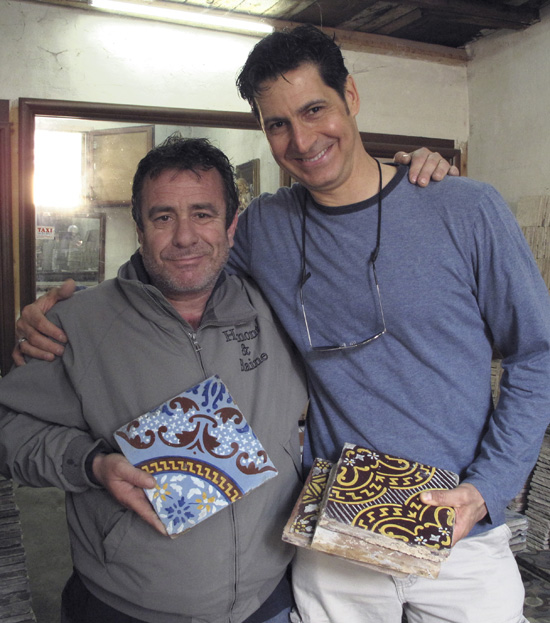Palermo is renowned for its old street markets, some of which have been in the same spot as early as the 10th century! As far as I know, each one is open every day (except Sunday). Some vendors have enclosed shop spaces. Others set up and take down every day.
La Vucciría – the most famous food market in the city.
Ballaró – the oldest food market in the city.
Casa Professa – selling second hand goods, new and used clothing, adjoining Ballaró.
Il Capo – selling fruits, vegetables, clothing and shoes. (This market was just a block from my B&B Kemonia.)
Mercato delle Pulci – flea market selling dusty furniture, crystal, porcelain, lamps, frames and tiles.
Lattarini – selling metal goods, tools, clothing and cloth.
– – –
The “Ave Maria” fruit stand, right in front of a niche honoring Mary.
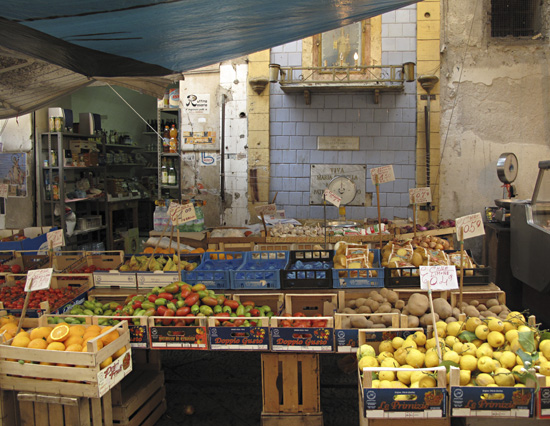
“Aromas” (maybe herbs?) and dried fruit.
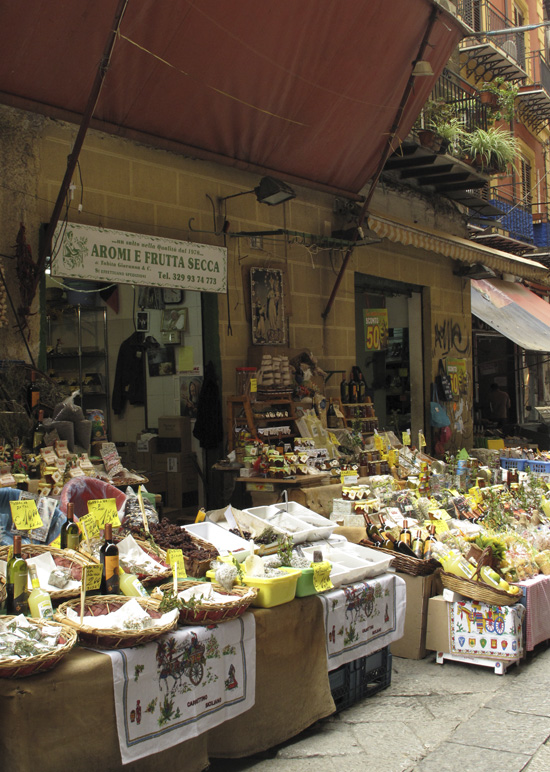
There are more types of artichokes here than I’ve ever seen.
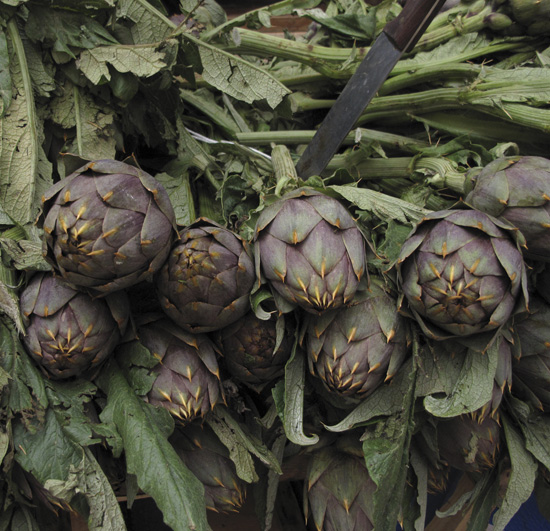
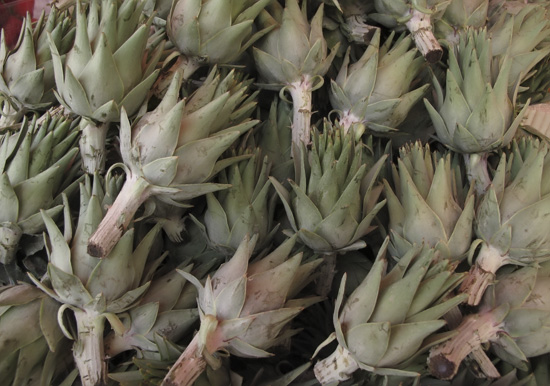
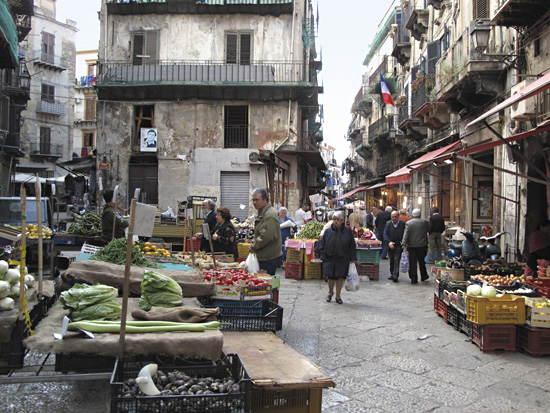
“Frutta e Verdura” = “Fruits and Vegetables”.
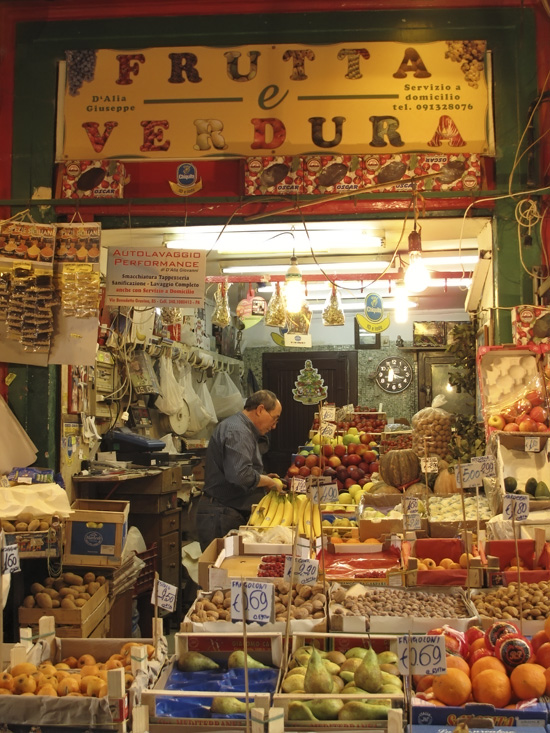
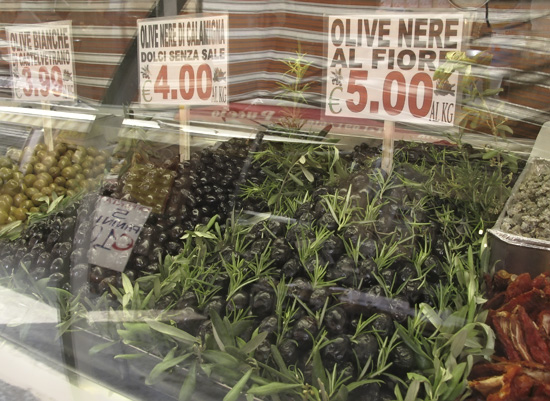
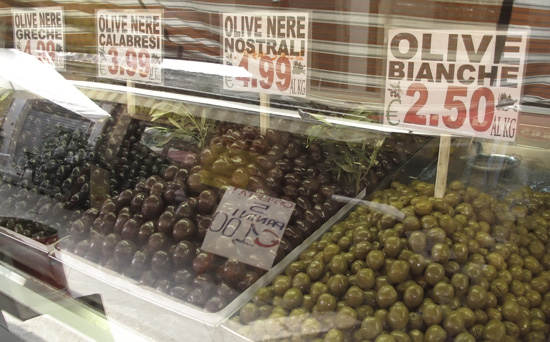
Some vendors sell general housewares, this one in front of the niche honoring Santa Rosalia, the Patron Saint of Palermo.
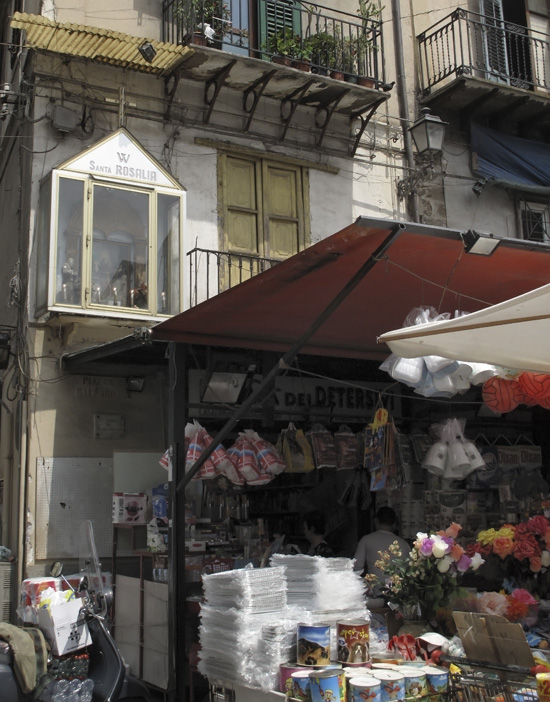
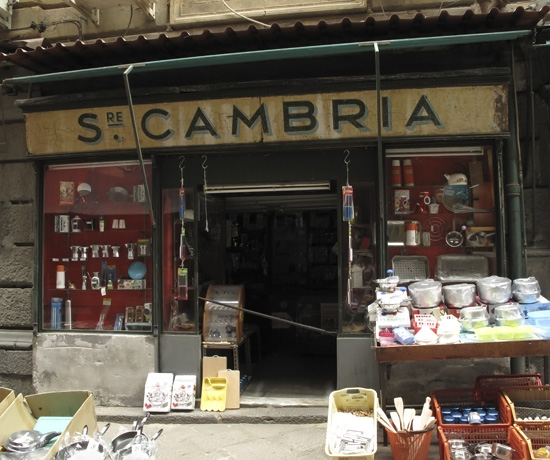
Looks like they’re selling toilet paper, cured meats and sandwiches. Whatever it takes to make a euro.
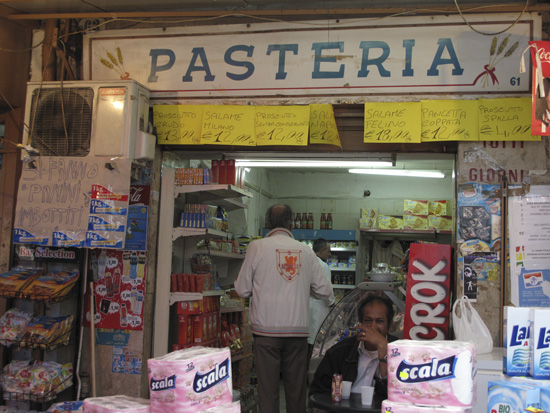
“The Delights of Meat”. A butcher and seller of fresh meats is a “Macelleria”.
A seller of cured meats is a “Salumeria”. The two don’t usually overlap.
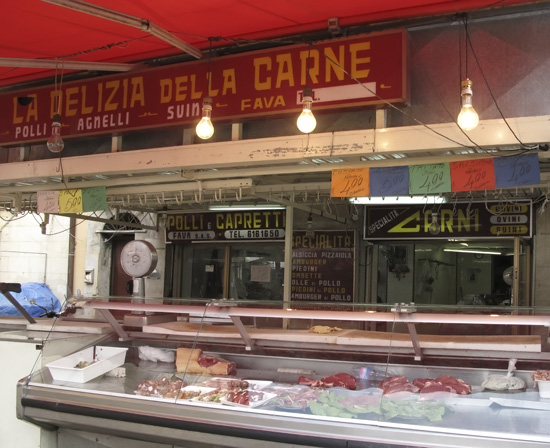
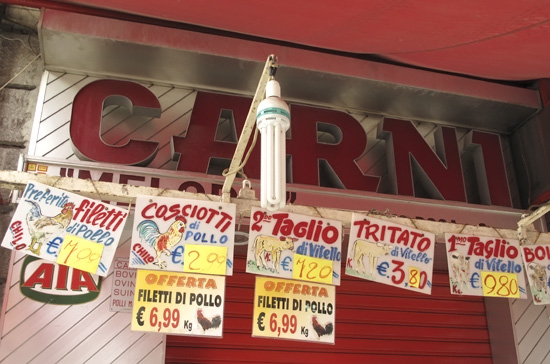
“Fantasies of Meat”.
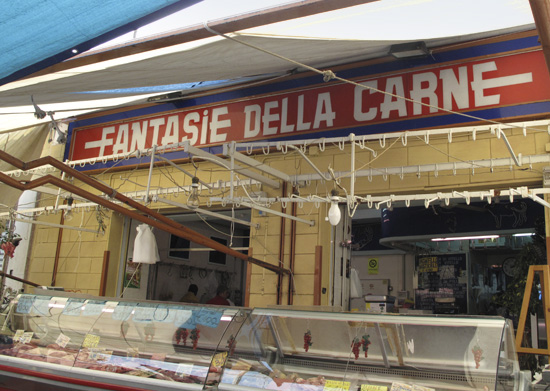
Cheeses and “salumi”, cured meats.
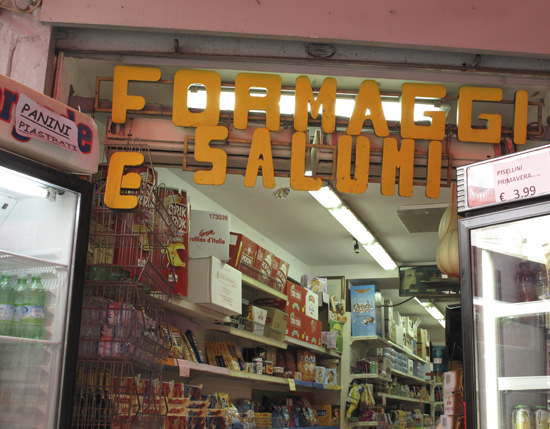
I recognize tripe, veal liver and oxtail. I don’t recognize the organs in the lower right…
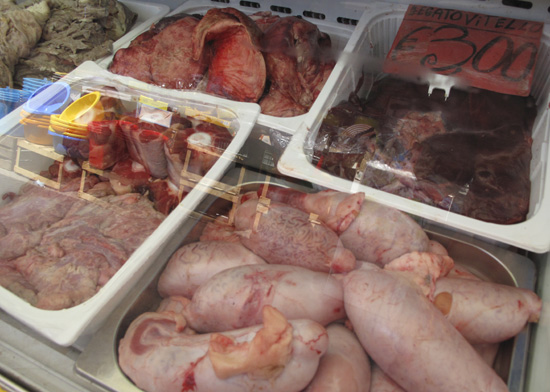
Feet and tripe. (In Firenze – Florence – the tripe is simmered and served up as a sandwich as “Lampredotto“, the regional specialty.
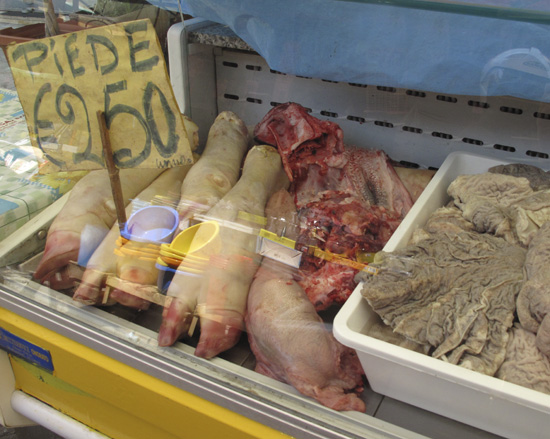
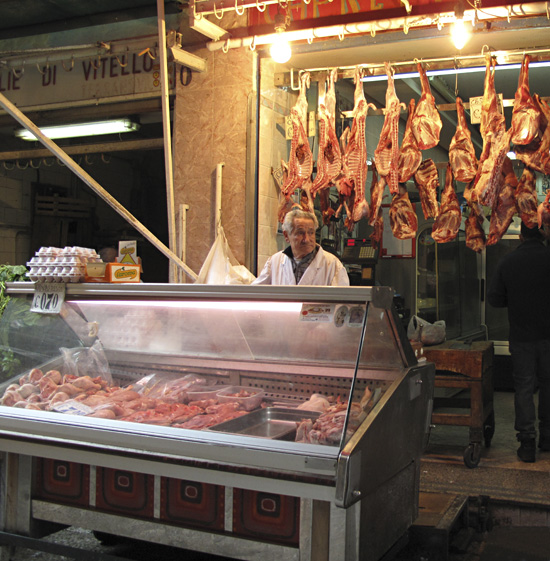
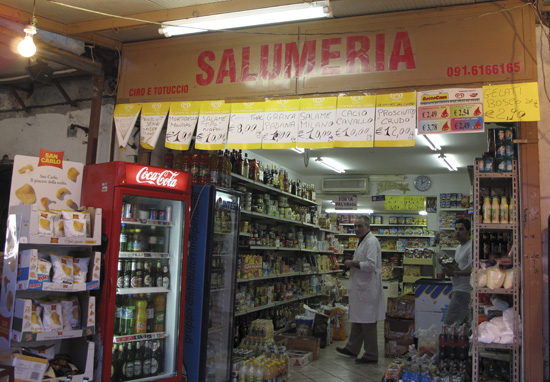
I’ve done a lot of fishing and eaten a lot of fish, but there are fish here that I don’t have a clue about! I don’t know their flavor, their boniness, their best preparation. So… I just buy one and cook it simply the first time to get a sense of it. (But there are some that I don’t have any idea how to begin with.)
Here’s a fishmonger hamming for the camera.
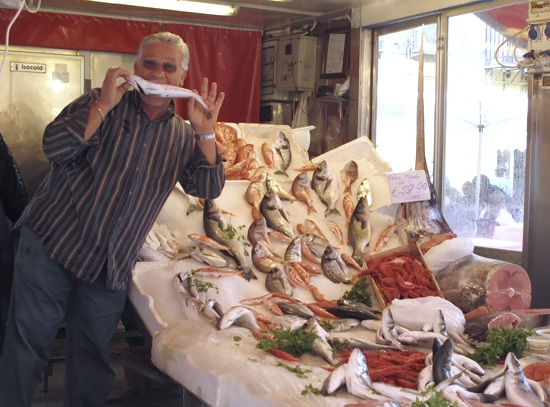
Why is this fish skinned? What’s the meat like? (What was the skin like?)
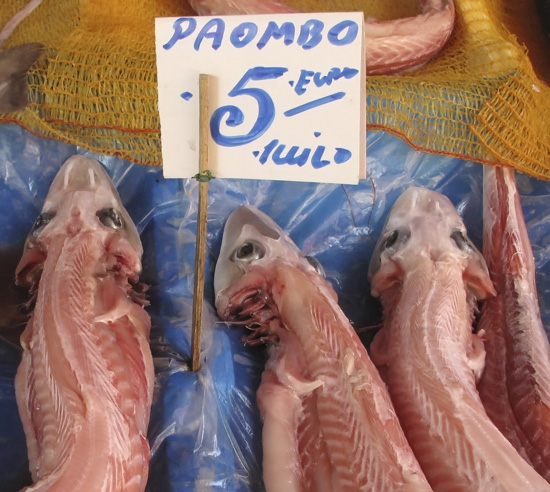
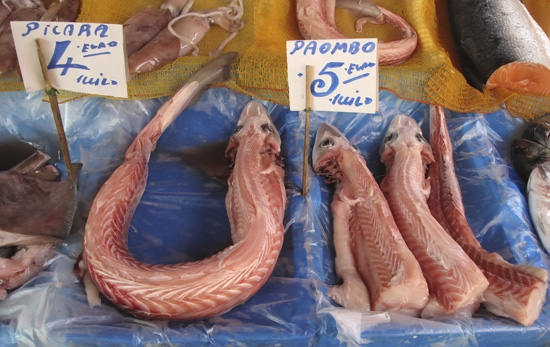
“Babbaluci“, and we’re not talking escargot. Some are getting away!
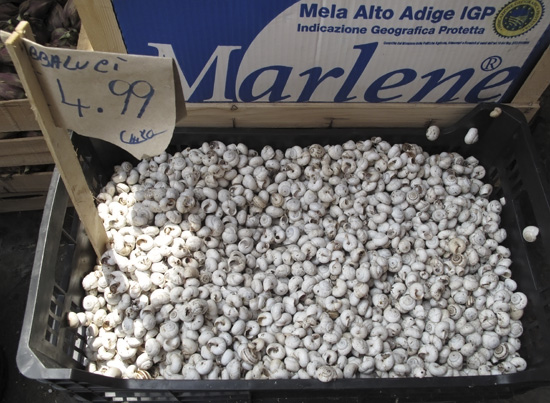
Gambero Rosso – Red Shrimp ONLY from that area. Also served raw (though a little slippery for my taste).
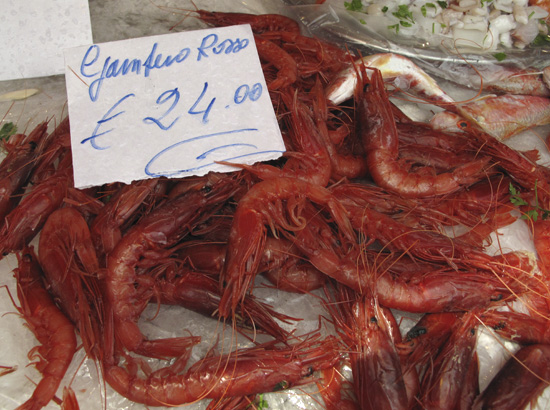
Hmm. The “Sgombro” are sold for both 3 euro per kilo, and 6 euro per kilo! (But the “nostrali” are “our own”).
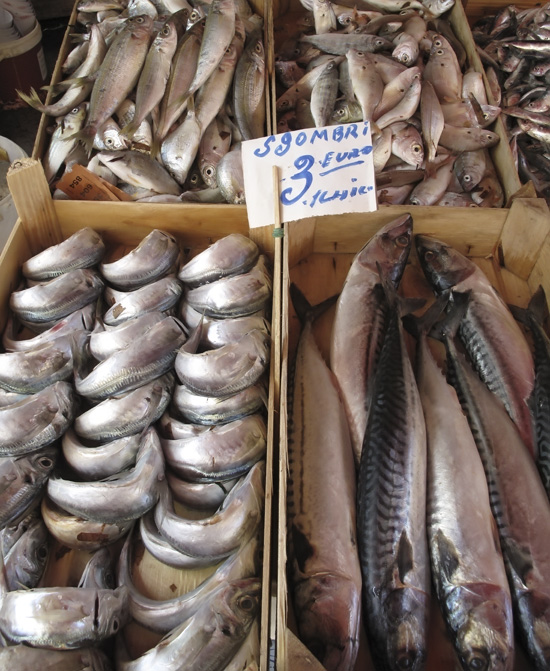
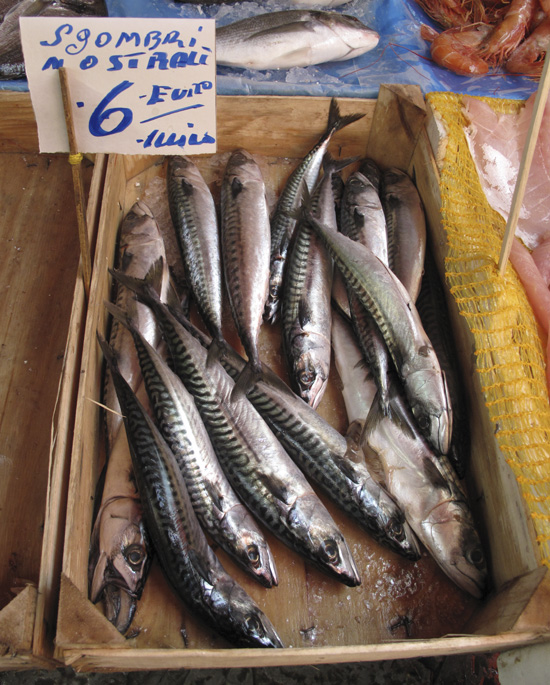
This fishmonger was reaching into his bucket and splashing water onto the fish to keep it moist. He kept posing as a “water-splashing fishmonger”. Note the paper cone in his hand. That’s what they form and package the small fish in. (Fruit vendors do the same thing for small fruit.)
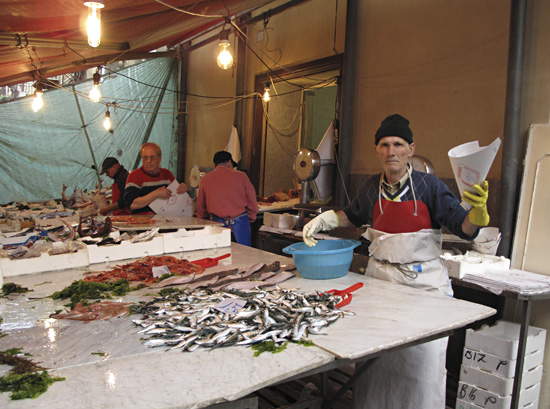
There are more squid and octopus relatives here than I can figure out. The line starts to be blurred for me between one and the other. And they all have names I don’t recognize.
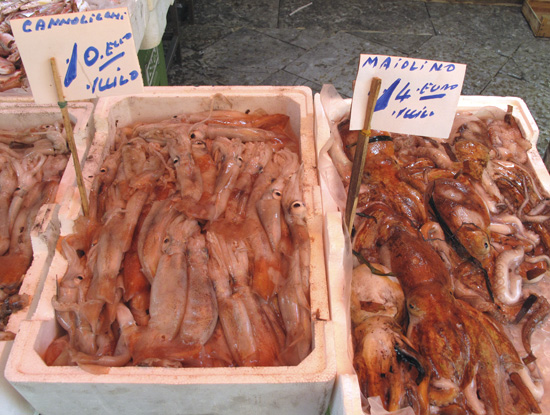
Swordfish – Spada – is very common around here. A great display is always made of the head and sword.
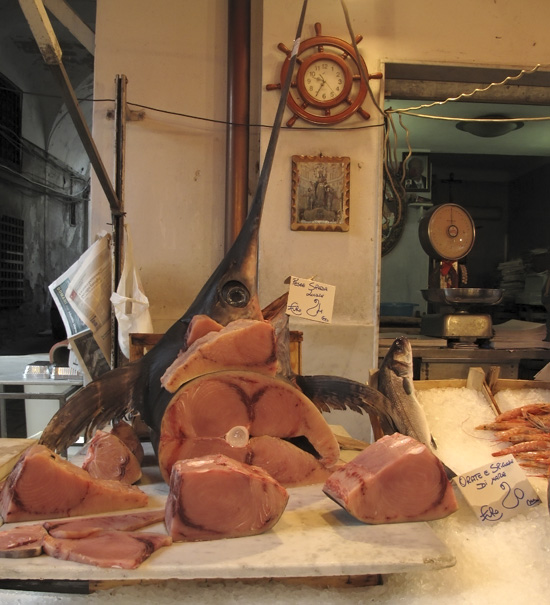
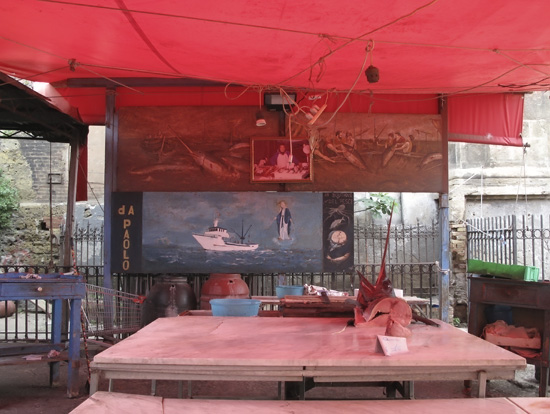
Compare the difference between the swordfish’s pale pink and the tuna’s deep red. One cooks up to white, the other to mid-gray (although served nicely raw).
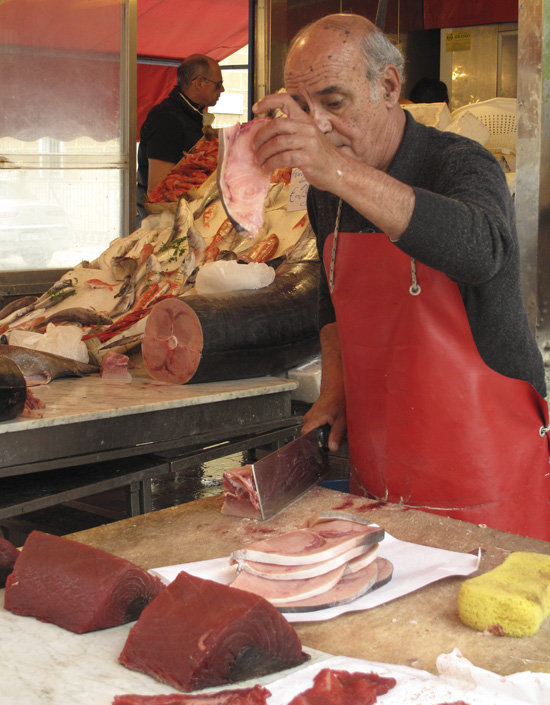
The Mercato delle Pulci caught my eye before I had identified it as the market. (“Pulci” means “fleas”! Flea market!) It’s built of tin and wood shacks encrusted over the years around giant tree trunks. The vendors sell dusty furniture, crystal, porcelain, lamps, frames, tiles and whatever odds and ends they can make a euro off of.
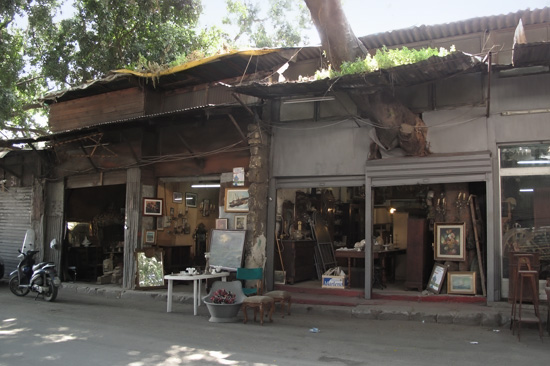
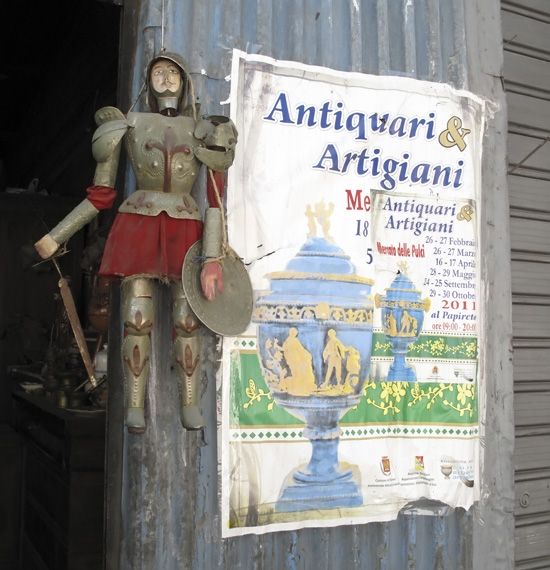
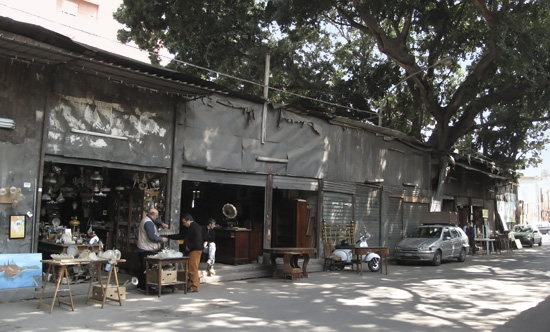
I talked to Bruno in one little space, who gave me a crystal teardrop pendant to carry around as a “porta fortuna” – a “fortune carrier” or good luck charm. It’s riding around in my coin purse now. (Note the tree trunk behind him, in the middle of his shop!)
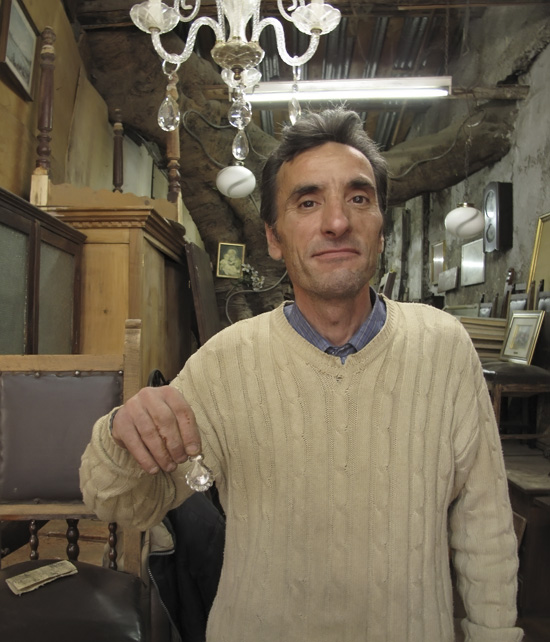
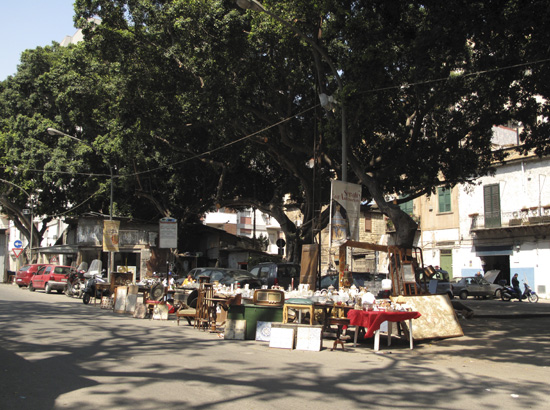
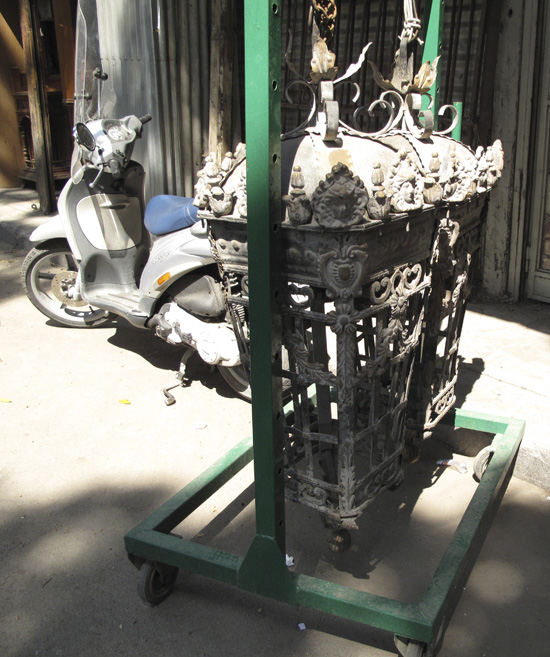
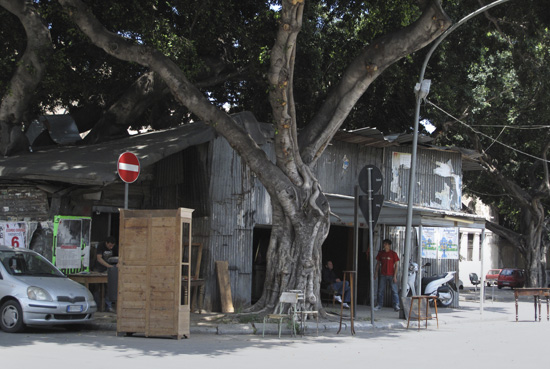
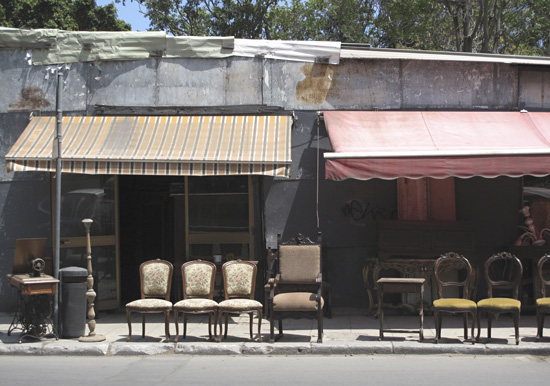
I also enjoyed the tile seller’s shop, with thousands of old maiolica tiles! (How old did he say these are?…)
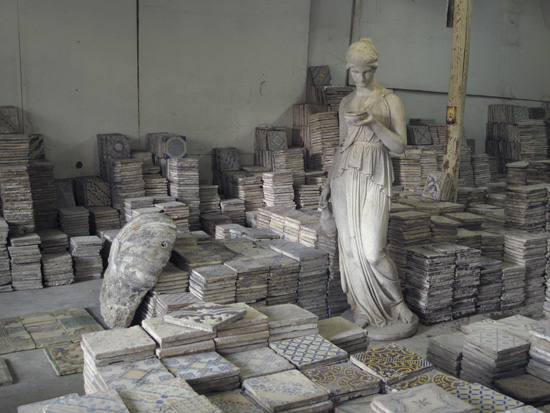
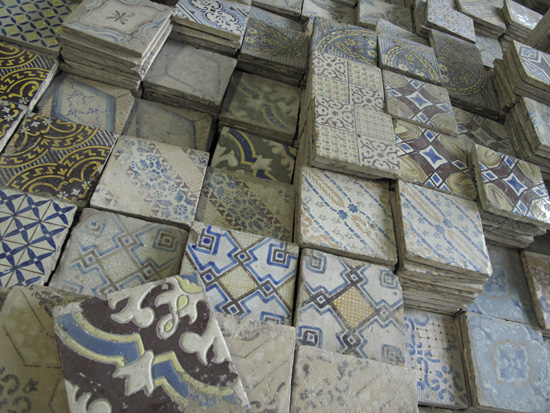
The tiles are so beautiful that I took Richard to Bebbé, the vendor. Richard and his Dad, Peter, were traveling in Sicilia from NYC, and were in Palermo at my B&B. We enjoyed dinners and exploration together. Richard bought four tiles to take home. (Doesn’t he look pleased?!)
